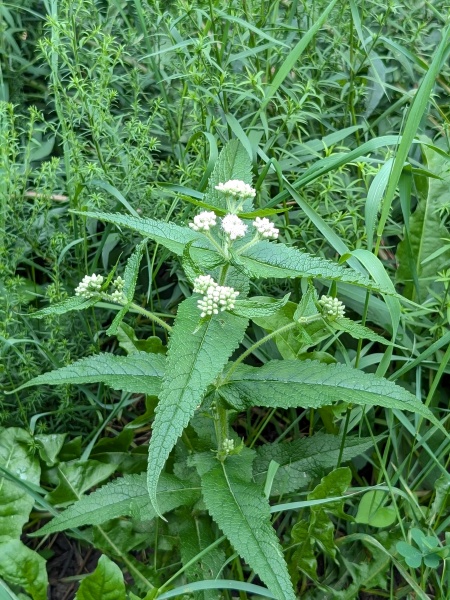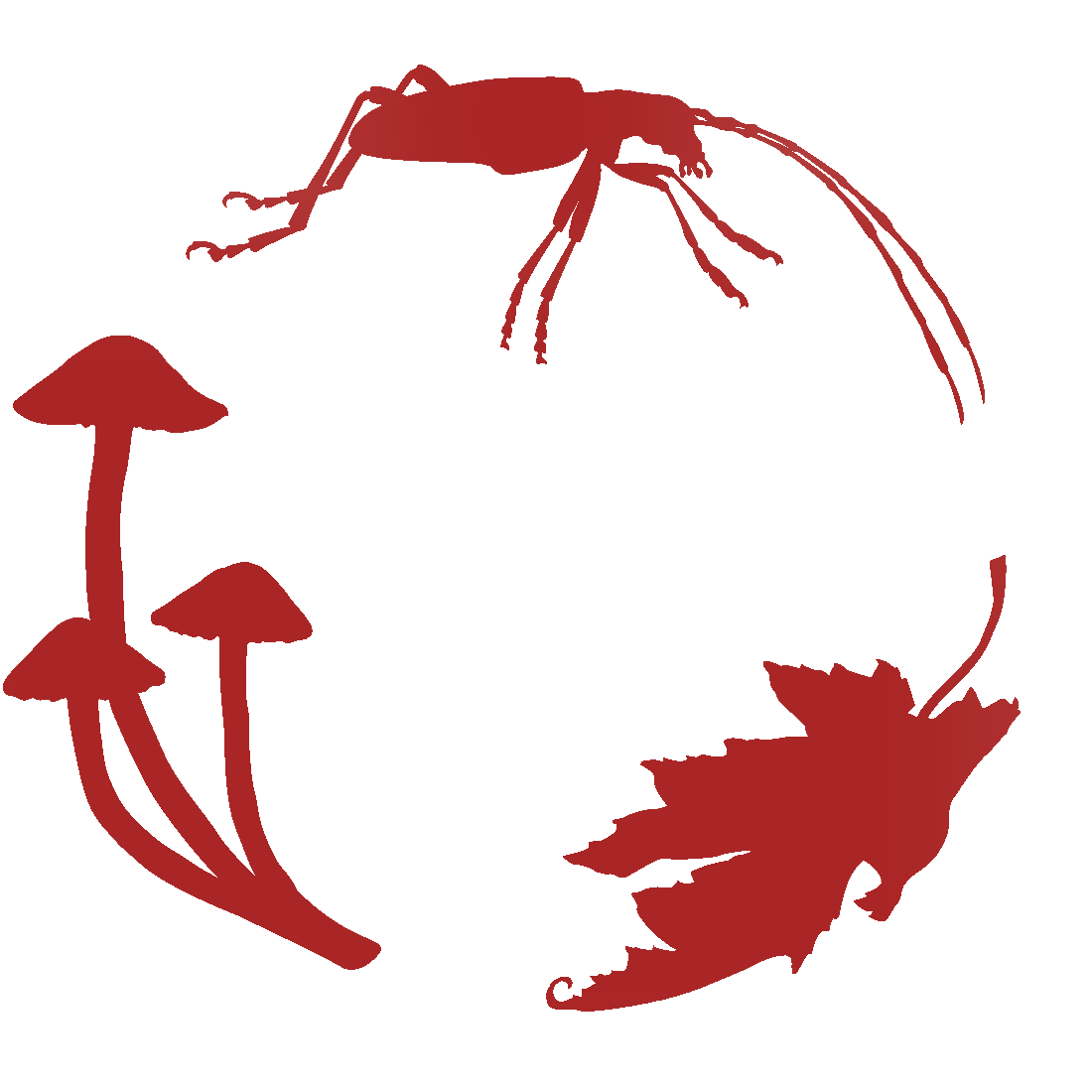 Known to be toxic - Toxic to mammals if ingested.
Known to be toxic - Toxic to mammals if ingested.

Source: Donna Bos
Eupatorium perfoliatum
Common Boneset
Eupatoire perfoliée
Synonyms
perfoliate thoroughwort
Seeds in stock
Available at table Mixed Sun, Wet
Available at table Mixed Sun, Wet
We currently accept seeds for this plant
Bloom Colour: White
Bloom Period: Jul - Sep
Max Height: 4.0 feet
Max Width: 2.0 feet (spreads by rhizome)
Light Condition:
 More than 6 hours of direct sun a day
More than 6 hours of direct sun a day
 More than 2 or 3 hours but less than 6 hours of direct sun a day
Soil conditions:
More than 2 or 3 hours but less than 6 hours of direct sun a day
Soil conditions:
 Tolerates medium soil condition
Tolerates medium soil condition
 More than 6 hours of direct sun a day
More than 6 hours of direct sun a day
 More than 2 or 3 hours but less than 6 hours of direct sun a day
More than 2 or 3 hours but less than 6 hours of direct sun a day
 Tolerates medium soil condition
Tolerates medium soil condition
Lifespan:
Perennial
plants that will that come back year after year
Gardener Experience:
 Does not spread uncontrollably
Does not spread uncontrollably
 Self-seeding
Self-seeding
 Does not spread uncontrollably
Does not spread uncontrollably
 Self-seeding
Self-seeding
Landscape Uses:
 Suitable for wetland garden
Suitable for wetland garden
 Suitable for rain gardens
Suitable for rain gardens
 Suitable for shoreline rehabilitation
Suitable for shoreline rehabilitation
 Suitable for school gardens
Suitable for school gardens
 Suitable for wetland garden
Suitable for wetland garden
 Suitable for rain gardens
Suitable for rain gardens
 Suitable for shoreline rehabilitation
Suitable for shoreline rehabilitation
 Suitable for school gardens
Suitable for school gardens
Ecological Benefits:
 Supports pollinators
Supports pollinators
 Butterfly host
Butterfly host
 Supports pollinators
Supports pollinators
 Butterfly host
Butterfly host
Tolerates:
 Tolerates salt conditions
Tolerates salt conditions
 Deer resistant
Deer resistant
 Rabbit resistant
Rabbit resistant
 Tolerates limestone conditions
Tolerates limestone conditions
 Tolerates juglone conditions
Tolerates juglone conditions
 Tolerates salt conditions
Tolerates salt conditions
 Deer resistant
Deer resistant
 Rabbit resistant
Rabbit resistant
 Tolerates limestone conditions
Tolerates limestone conditions
 Tolerates juglone conditions
Tolerates juglone conditions
Special Features and Considerations:
Plant Location
Native to Ottawa region: Yes
Distribution according to VASCAN

Ephemeral
Native
Introduced
Excluded
Extirpated
Doubtful
Absent
Thrives in Ecozones
- Atlantic Maritime
- Boreal Plains
- Prairies
- Boreal Shield
- Mixed Wood Plains
Ecological Benefits
Butterflies Supported by Eupatorium perfoliatum
- Carmenta pyralidiformis (Boneset Borer)
- Haploa clymene (Clymene)
- Phragmatobia fuliginosa (Ruby Tiger)
- Schinia trifascia (Three lined flower)
Specialized Bees Supported by Eupatorium perfoliatum
No bee data available for this plant.
Plants that grow in similar conditions, that bloom at the same time.
Complementary Plants
- Agastache nepetoides
Yellow Giant Hyssop
Agastache faux-népéta - Eutrochium maculatum
Spotted Joe Pye Weed
Eupatoire maculée - Lilium canadense
Canada Lily
Lis du Canada - Scirpus atrovirens
Dark-green Bulrush
Scirpe noirâtre - Verbena hastata
Blue Vervain
Verveine hastée
Substitute For Non-Native Plants
- Thalictrum (Non-Native Meadow Rue)
- Symphiotrichum (Non-Native Aster)
Sowing Information
Download Seed Envelope Labels (PDF)
- Sowing depth: Surface sow
- Sow by March
- Stratification duration: 30 days
- Self-seeding
Harvesting and Seed Sharing
- Harvest start month: September
- Harvesting indicator:
- Seeds have become fluffy and can be easily removed by shaking on gently pulling off from stem
- Harvesting:
- Shake seed head in paper bag
- Seed viability test:
- No test needed before donating
- Packaging measure: 1 rounded 1/8 teaspoon
- Seed storage:
- Air dry in paper bag or open container, for a few days until crisp
- Shake seeds to move them once in a while to prevent molding
- Cultivar: No, you can donate without knowing the source as there are only straight species
- No harvesting video available at this time.
Toxicity Notes
Toxic to mammals if ingested.


 Canadensis
Canadensis
